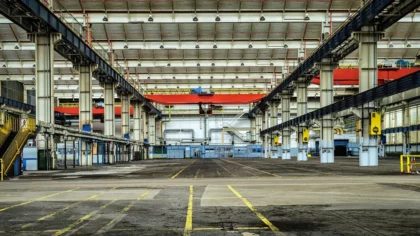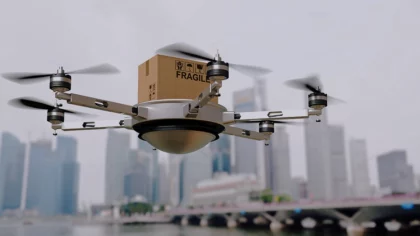Accelerate Productivity in 2025
Reignite Growth Despite the Global Slowdown
Global merchandise trade is forecasted to fall by 0.2% in 2025. WTO also reversed the growth projection as tariff escalation bites. Logistical instability persists as container-ship schedule reliability reached only 58.7% in April 2025, barely above pre-pandemic lows.
Climate risks add further strain, with Swiss Re projecting record USD 145 billion in insured catastrophe losses for 2025. Against this backdrop, 42% of CFOs name enterprise risk management as their top priority for 2025. This highlights a shift towards business resilience planning as a board-level imperative.
This guide on business resilience planning outlines 10 core strategies, technologies, and real-world applications for enterprises to mitigate macroeconomic shocks, secure liquidity, and maintain business continuity.

Executive Summary
- 4 Executive-Level Disruption Themes Reshaping Business Planning: Analyzes the current macroeconomic pressures, including tariff escalations, climate shocks, digital sovereignty mandates, and geopolitical realignments impacting global business continuity.
- 10 Board-Level Strategies for Business Resilience
- Build Deep Liquidity & Dynamic Capital Buffers
- Diversify & Digitize the Supply Network
- Deploy AI Forecasting & Digital-Twin Scenario Planning
- Converge Cybersecurity & Operational Resilience under Zero Trust
- Anchor Infrastructure in Multi-Cloud, “Design-for-Failure” Architectures
- Automate Regulatory & ESG Compliance
- Institutionalize Continuous Testing & Simulation
- Embed ESG & Climate Adaptation into Core Strategy
- Cultivate a Resilient, Cross-Skilled Workforce & Culture
- Harness Ecosystem Collaboration & Public-Private Partnerships (PPPs)
4 Macroeconomic Pressures Requiring Executive-Level Resilience Planning
Escalating Tariff Barriers, Inflationary Pressures & Supply Chain Disruptions
The IMF reduced its 2025 global economy forecast from 3.3% to 2.8% amid tariff escalations.
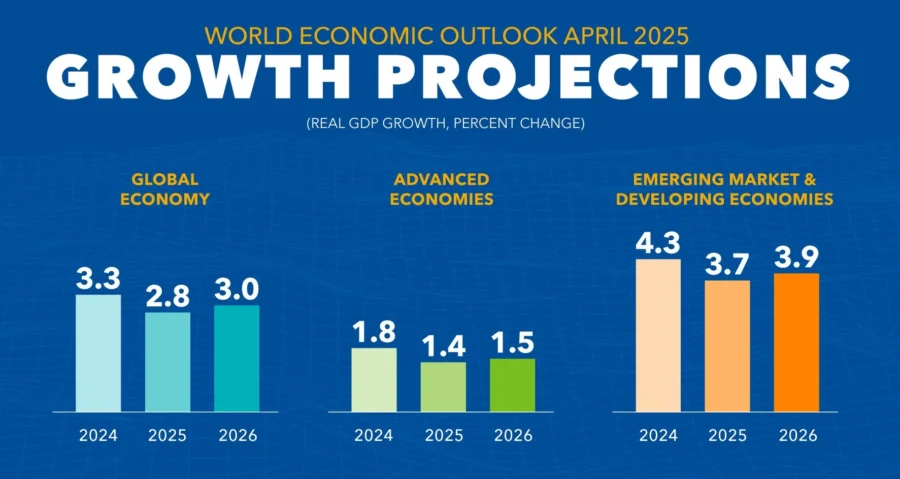
Source: IMF
The US introduced “reciprocal tariffs” on 57 nations in 2025, with rates as high as 50% on sectors like automobiles, semiconductors, and pharma, which pushes the average tariff rate toward 17.8%.
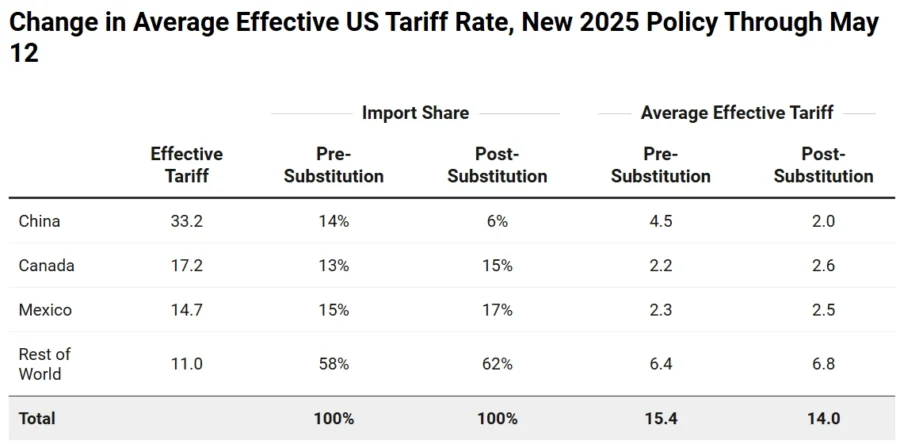
Source: The Budget Lab
Global merchandise trade is projected to fall by 1.5% in 2025 under intensified trade tensions and strained industrial supply chains.
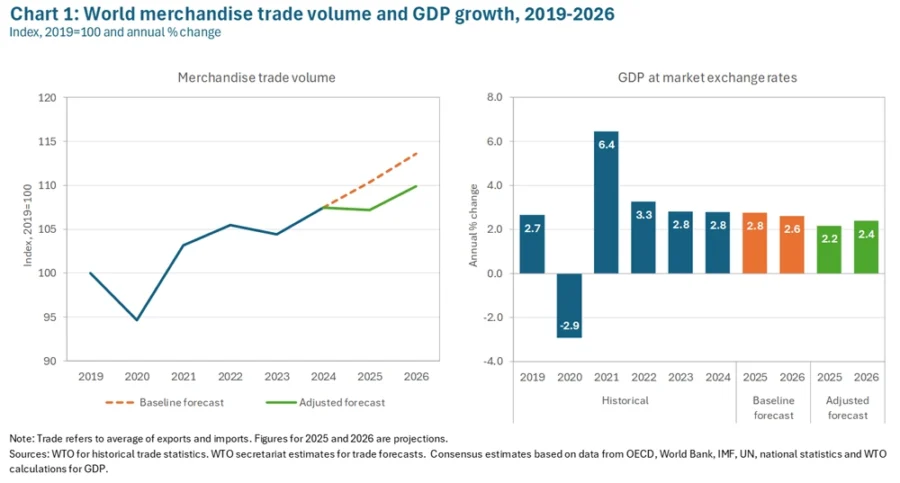
Source: World Trade Organization
Supply chain interruptions further surged 38% year-over-year, with a 119% increase in extreme weather events, and a 285% spike in protests and civil unrest.
The US consumer price index (CPI) rose to 2.4% in May 2025, while tariff-linked cost pass-through is expected to accelerate inflationary pressures through Q4.
Workforce and Operational Challenges
Labor shortages persist, with OECD vacancy rates nearly doubling since 2014, especially acute in healthcare and ICT.
Last year, UK net migration halved due to visa tightening, with similar trends in Australia and the US that fueled wage inflation.

Source: Reuters
Expanding ESG & Digital Sovereignty Mandates
From 2025, the EU’s Corporate Sustainability Reporting Directive (CSRD) requires ESG disclosures from 50 000 companies.
In the US, the SEC’s climate rule mandates that listed firms disclose climate risks and Scope 1-2 emissions, despite ongoing legal challenges.
Meanwhile, the EU DMA enforces strict rules on six tech “gatekeepers,” with non-compliance fines up to 20% of global turnover. This raises digital sovereignty risks.
Fracturing World Order & Geopolitical Tensions
The Israel-Iran conflict is disrupting global trade, spiking energy prices, rerouting shipping lanes, and more.
Meanwhile, BRICS+ welcomed Saudi Arabia and the UAE at the Kazan summit, where leaders endorsed local currencies to cut dollar dependence.
Diverging monetary policies, like rate cuts in Brazil and India, contrast with tight stances in the US. The US dollar has also weakened by 10% YTD, while Nordic currencies are up by 13% which signals increasing hedging complexity.
10 Board-Level Business Resilience Strategies to Tackle the Current Market

1. Build Deep Liquidity & Dynamic Capital Buffers
Financial shocks and tightening credit conditions are making liquidity resilience a cornerstone of business continuity planning. For example, the collapse of regional US banks prompted swift action from finance leaders.
45% of organizations shifted deposits to larger institutions, while 35% diversified cash holdings across multiple banks to mitigate counterparty risk. This flight to safety reflects a broader imperative of protecting real-time access to cash amid uncertainty.
Rising interest rates and restrictive lending environments are also pressuring operational cash flows. 89% of CFOs reported a growing need for additional working capital to navigate volatile markets and limited credit availability.
To meet these challenges, companies are doubling down on treasury digitization, scenario planning, and stress-tested funding strategies.
Deep liquidity buffers and adaptive capital planning thus assist CFOs to act swiftly during crises, fund innovation, and weather funding freezes. By combining structured reviews, AI forecasting, and intelligent liquidity infrastructure, organizations convert static reserves into dynamic assets while improving capital efficiency.
Core Practices for Resilience
| Strategy Component | Purpose | Impact |
|---|---|---|
| Structured Liquidity Reviews | Hold weekly “cash councils” to assess forecasts, counterparty risks, and covenant status. | Supports fast decisions and prevents liquidity shortfalls. |
| AI-Powered Rolling Forecasts | Use machine learning to continuously update cash forecasts based on real-time and macro inputs. | Enhances forecast precision and readiness for stress events. |
| Flexible Funding Facilities | Maintain diverse funding channels – credit lines, revolvers, and internal lending setups. | Secures fast access to liquidity during cash flow strains. |
Technologies You Need to Invest In
- GenAI Treasury Copilots: LLM-based interfaces generate variance reports, simulate liquidity moves, and reduce reporting time. Kyriba benchmarks show up to 80% accuracy improvement in cash forecasting when AI learns from historical and real-time data.
- Decision Intelligence Platforms: Integrate enterprise resource planning (ERP), market, and banking data to model funding options in real-time and auto-execute optimal actions. Real-world deployments shorten inventory-to-cash cycles by up to 20% and free trapped working capital.
- API-Native Dashboards: Real-time foreign exchange and cash-risk dashboards with one-click hedges eliminate latency in risk mitigation.
- On-Chain Deposits & Liquidity Rails: Blockchain-powered smart contracts enable instant, cross-border cash pooling without pre-funding. This improves overnight liquidity access. New Kinexys network averages USD 2 billion transfers every day after GBP roll-out in 2025.
Real-World Case Studies
Cenveo – Treasury Automation with AI Liquidity Platform
Cenveo achieved a 93% improvement in cash forecast accuracy and a 90% boost in treasury productivity using Kyriba’s AI-powered platform. This freed up internal reserves and accelerated capital allocation during financial shocks.
JPMorgan Chase – 24×7 Liquidity via Blockchain-Enabled Settlements
JPMorgan’s Kinexys platform processes over USD 1 billion in daily blockchain-based settlements through JPM Coin. It offers instant cross-border cash access. The 24×7 liquidity rail allows corporates to maintain accessible capital buffers beyond traditional banking hours.
MakerDAO – Unlocking Liquidity from Real-World Assets
MakerDAO integrates USD 2.06+ billion in real-world assets to back its DAI stablecoin, which converts illiquid holdings into liquid digital capital. This model enables on-demand liquidity access without traditional asset liquidation.
Spotlighting an Innovator: Round Treasury
Round Treasury is a UK-based startup that provides an API-first treasury and liquidity platform for founders and CFOs. It consolidates all business bank accounts into a single dashboard using open banking APIs, then allocates idle funds across savings accounts with next-day liquidity and FSCS protection.
The platform automates liquidity sweeps and monthly reconciling via AI-driven tools and integrates directly with accounting systems. Its automation features reduce risk by diversifying deposits across banks and offer real-time insights on yield, liquidity, and protection levels.
2. Diversify & Digitize the Supply Network
Global supply chains remain under heavy strain due to geopolitical friction, climate extremes, and lingering pandemic aftershocks. Overall disruptions have jumped 38% year-over-year. Extreme-weather alerts are up 119% and protests/riots have surged 285%.
Maritime congestion adds to the pressure as container-ship schedule reliability has dropped to 48.1%. Delayed vessels now arrive an average of 4.6 days late, which is far below pre-pandemic norms.
Executives are responding on two fronts:
- First, they are diversifying sourcing regions. A Maersk poll shows 53% of European shippers are exploring alternatives. Another 33% are nearshoring to Turkey, Poland, and other Central and Eastern European hubs to reduce single-node exposure.
- Second, they are accelerating digitalization. Survey shows 50% of supply-chain organizations budgeting for AI-driven analytics this year. Still, 90% report talent shortages that slow progress.
Simio reports 70% of C-suite technology leaders now investing in digital-twin platforms that deliver 30 to 60% productivity gains.
Core Practices for Resilience
| Strategy Component | Purpose | Impact |
|---|---|---|
| Multi-source & Near-region Sourcing | Diversify suppliers to reduce geographic dependency and build redundancy. | Speeds up fulfillment and improves regional risk response. |
| Digital Platforms & Real-time Visibility | Leverage IoT, RFID, and dashboards for live tracking of goods and suppliers. | Enables faster issue detection and proactive response. |
| Analytics-based Safety Stocks | Use predictive models to right-size inventory buffers. | Cuts excess stock while maintaining service levels. |
| Alternative Logistics Routing | Define backup multimodal routes for critical SKUs. | Avoids fulfillment delays during disruptions. |
| Digital Twins & Stress Simulation | Simulate disruptions and test supply chain response virtually. | Supports contingency planning and minimizes downtime. |
Technologies You Need to Invest In
- IoT & Big Data Pipelines: Enable real-time data aggregation across suppliers, shipments, and warehouses to power risk alerts and predictive insights.
- Digital Supply Networks (DSNs): Connect ERP, logistics, supplier, and customer data into unified decision-making hubs.
- Blockchain Tracing: Enables secure and transparent transaction records to improve traceability, reduce fraud, and build trust with partners.
- Digital Twin Platforms: Use real-time data and AI modeling to simulate disruption scenarios and optimize responses before issues occur.
Real-World Case Studies
Katty Fashion – Proactive Rerouting via Supplier Digital Twins
Katty Fashion, under the EU-backed R3GROUP initiative, deployed digital twin simulations to map and model its entire supplier ecosystem. By stress-testing scenarios like climate-induced material shortages and logistics blockages, the company dynamically reroutes production and shifts sourcing.
CVS Health – Automated Distribution for Inventory Optimization
CVS Health implemented a digitally mapped distribution strategy across its 9000+ stores that integrated automation and data analytics to align fulfillment with demand signals. This enabled a USD 2.5 billion inventory reduction between 2022 and 2024, while improving on-shelf availability.
Dollar General – Localized Warehousing with AI-Driven Stocking
Dollar General digitized its inventory management system and created a decentralized network of regional warehouses. The company achieved a 6.9% per-store inventory reduction while enhancing product availability at rural locations.
Spotlighting an Innovator: SupplyScope
SupplyScope is an Australian startup that integrates an AI-driven product-lifecycle and supplier-compliance solution. It centralizes product information, workflows, supplier data, and compliance records through a unified interface.
The platform manages product specifications, sample workflows, quality assurance checks, pre-shipment inspections, and supplier onboarding using customizable rules and frameworks.
3. Deploy AI Forecasting & Digital-Twin Scenario Planning
Tariff escalations, climate-driven shocks, and volatile consumer demand trigger disturbances in product orders and inventories.
AI-driven forecasting addresses these challenges by improving forecasting accuracy by 10% to 20% and reducing warehousing costs by 5 to 10%. Also, 23% of supply chain leaders now consider AI “mission-critical” to stay competitive.

Source: Gartner
Companies that have transitioned from spreadsheet-based planning to predictive analytics report annual inventory-carrying cost reductions accompanied by up to a 65% reduction in lost sales with faster deliveries.
Alongside AI forecasting, digital twins offer a complementary advantage. Although only 21% of companies have implemented a supply chain digital twin, 97% of these users rate it as “highly effective” in delivering business value.
Companies deploying AI forecasting and digital twin scenario planning have reduced planning errors, lowered warehousing costs, and improved earnings before interest and tax (EBIT) margins. These capabilities also provide valuable lead time when unexpected disruptions arise.
Core Practices for Resilience
| Strategy Component | Purpose | Impact |
|---|---|---|
| AI-Powered Rolling Forecasts | Apply machine learning to integrate live internal and external data. | Improves forecast accuracy and service levels. |
| Digital Twin Scenario Simulations | Build virtual models of supply chains, facilities, and inventory. | Enables “what-if” testing for disruptions like outages or spikes. |
| Continuous Forecast-to-Execution Loop | Integrate forecasting with planning and execution in real time. | Accelerates response and reduces execution delays. |
| Reinforcement Learning & Autonomous Optimization | Enable AI to optimize performance continuously under constraints. | Drives adaptive improvements without manual intervention. |
Technologies You Need to Invest In
- AI Forecast Engines: Multivariate ML models ingest sales, weather, macro data, and social signals to enable dynamic demand forecasting. These systems decrease lost sales by 65%, and lower warehousing/admin costs by 5 to 40%.
- Digital Twin Platforms: Simulate entire physical networks to stress-test against disruptions before they occur.
- Integration Middleware & Control Towers: Connect forecasting engines, S&OP systems, execution platforms, and enrichment tools like LLM copilots to enable real-time decision cycles and autonomous adjustments.
- Reinforcement Learning Modules: Implement advanced AI to autonomously tweak inventory buffers, shipping plans, and production schedules in simulation before rolling changes into production.
Real-World Case Studies
Accenture & Exercise-Bike Manufacturer – OTD Accuracy & Cost Savings
Using AnyLogic‘s digital twin, Accenture created a forecast-to-delivery system that increased order-to-delivery accuracy by 57% and reduced logistics cost by 20%.
DXC & ISA Vias (Chile) – Infrastructure Resilience
DXC built a digital twin of Chile’s major roadway operator International Society of Automation (ISA). It enables real-time simulations of traffic, emergencies, and environmental stress to enhance both operational resilience and sustainability performance.
Spotlighting an Innovator: Tomorrow Things
Tomorrow Things is a German startup that offers a digital-twin builder platform for industrial assets through its cloud-based Things OS operating system.
It creates Things Twins, digital replicas of industrial assets, by capturing machine “fingerprints” via AI-generated blueprints and linking those assets to the cloud using plug-and-produce integration.
The system aggregates sensor and process data to power AI-driven applications like remote maintenance, predictive analytics, and performance monitoring, while maintaining compliance in a secure EU-hosted environment.
4. Converge Cybersecurity & Operational Resilience under Zero Trust
Cyber threats pose systemic risks to business continuity, especially as operations, infrastructure, and services intertwine with digital technologies.
A recent report by WEF highlights that 29% of organisations were materially affected by cyber incidents in the past year. A research by Blackberry reveals that among affected organizations, 64% incurred financial losses, while 59% lost their data and 58% suffered reputational damage.
The Everest ransomware gang leaked more than 1100 internal files after breaching Coca-Cola’s Middle East division. This exposed personal and HR records for around 1000 employees.
In parallel, UK banks face relentless cyberattacks. Global financial institutions are projected to spend USD 32 billion on cybersecurity in 2025, with banks like HSBC alone invested hundreds of millions of pounds.
Gartner describes Zero Trust as “embedding resilience into every facet of an organization”. Its core tenets of continuous identity verification, least-privilege access, micro-segmentation, and pervasive monitoring form a robust framework for integrating cybersecurity and operational resilience.
63% of organisations are now investing in zero trust, yet 35% reporting implementation failures, success hinges on embedding it into operational planning, not just IT systems.
Core Practices for Resilience
| Strategy Component | Purpose | Impact |
|---|---|---|
| Continuous Identity & Least-Privilege Access | Assign dynamic, context-aware permissions to users and devices. | Minimizes attack surface across internal and external vectors. |
| Micro-segmentation & Zero-Trust Network Access | Isolate systems and limit lateral movement between network zones. | Contains breaches and protects critical assets. |
| Continuous Monitoring & Behavioral Analytics | Track real-time activity to detect abnormal behavior patterns. | Enables faster threat detection and response actions. |
| Embedded Incident Response & Recovery Planning | Incorporate cyber drills into wider operational resilience plans. | Reduces downtime and improves crisis readiness. |
| Supplier & Asset Cyber Risk Management | Continuously evaluate third-party security and compliance posture. | Strengthens security across the extended enterprise. |
Technologies You Need to Invest In
- AI-driven Identity & Access Management (IAM): Context-aware authentication (device posture, behavior, location) ensures identity always stands verified.
- Zero Trust Network Access & Micro-segmentation Tools: Implement ZTNA policies and segment workloads to control lateral movement.
- SIEM/UEBA & Security Analytics Platforms: Provide continuous visibility, anomaly detection, and threat response across cloud, on-premises, and OT environments.
- Integrated Incident Response Platforms: Combine cyber and operational guide to simulate breaches, ransomware, or supply chain failures as unified recovery protocols.
Real-World Case Studies
UK Banks – Zero Trust & Resilience Testing
The Bank of England’s CBEST and biennial cyberwar simulations mandate leading banks (like HSBC) to embed Zero Trust principles into their resilience planning. These exercises defend against sophisticated attacks.
Port of Corpus Christi – Digital-Twin-Enabled Security Modernization
After rolling out its OPTICS AI-powered digital-twin platform, the port now fuses live data from vessels, operational-technology assets, and administrative networks to improve situational awareness and emergency-response drills.
Industry briefings note that the port is evaluating Zero-Trust segmentation as its next step for isolating critical systems and safeguarding continuity against physical and cyber threats.
Spotlighting an Innovator: K Trust
KTrust, the Israeli platform, provides a Kubernetes security posture management solution through an attacker-centric threat-detection and response platform. It operates by dynamically navigating Kubernetes clusters in a sandboxed environment and executes automated red-team maneuvers that emulate real-world attacker behavior.
It leverages CVEs, MITRE frameworks, proprietary attack flows, and insights from its research lab to identify and validate actual exposures. The system uncovers innovative attack paths, validates each exposure to reduce false positives, and generates prioritized mitigation strategies that integrate seamlessly with DevSecOps workflows.
It offers continuous threat exposure management (CTEM), supports breach and attack simulations, and includes ransomware protection along with network visibility tools.
5. Anchor Infrastructure in Multi-Cloud, “Design-for-Failure” Architectures
A null-pointer defect in Google Cloud’s Service Control recently crashed 50+ services across every region for up to 2 hours. This stalled platforms like Spotify to Cloudflare and prevented customers from even viewing the status page.
Similarly, Microsoft 365 suffered a global routing misconfiguration that made Teams, Exchange, and SharePoint go offline for several hours.
Outages inflict material harm; 1000 technology executives found that 100% of companies lost revenue to outages in the past 12 months. That averages 86 downtime hours a year, with one-third losing USD 100 000 to USD 1 million per incident.
A study shows that an SMB with 100 employees now loses USD 1025 in wages every day to micro-outages alone. Faced with that risk, enterprises are moving from “best-of-breed cloud” to multi-cloud by default.
80% of businesses believe multi-cloud environments prevent vendor lock-in and offer greater autonomy, while multi-cloud is no longer optional because it is necessary for reducing risks, controlling costs, and meeting regulatory demands.
Yet, Gartner warns that more than 50% of multi-cloud initiatives will fail to deliver benefits by 2029 due to fragmented operations and poor interoperability. To escape that fate, leaders are reviving a principle that Netflix popularized with Chaos Monkey – “design for failure.”
Core Practices for Resilience
| Strategy Component | Purpose | Impact |
|---|---|---|
| Multi-Cloud & Hybrid Deployment | Run workloads across multiple public and private cloud environments. | Ensures failover capabilities and regional regulatory alignment. |
| Design-for-Failure Patterns | Use canary releases, chaos testing, and blue/green deployments. | Minimizes downtime and detects issues before full rollout. |
| Infrastructure as Code (IaC) & Portability | Leverage tools like Terraform and Kubernetes for consistent deployments. | Enables faster scaling and cross-platform portability. |
| Chaos Engineering & Self-Healing Systems | Test system resilience by intentionally triggering faults. | Validates recovery mechanisms and improves reliability. |
| Automated Monitoring & Auto-Recovery | Enable automated scaling, rerouting, and healing via cloud control planes. | Lowers MTTR and reduces reliance on manual intervention. |
Technologies You Need to Invest In
- Service Mesh Technologies: Implement fine-grained traffic control and fault isolation across services using Istio, Linkerd, or AWS App Mesh.
- Observability & AIOps Platforms: Detect, visualize, and automatically respond to failures with Prometheus, Datadog, or Dynatrace.
- Disaster Recovery & Backup Orchestration: Enable fast, automated failover and data recovery with Zerto, Veeam, or Druva.
- Edge Runtimes & Serverless Platforms: Deploy critical logic closer to users using Cloudflare Workers or AWS Lambda@Edge to minimize downtime during core failures.
Real-World Case Studies
Form3’s Multi-Cloud Payments Infrastructure
To meet financial-sector resilience requirements, Form3 deployed a distributed architecture across AWS, GCP, and Azure using CockroachDB and Kubernetes. This setup ensures workload portability, automated failover, and eliminates single points of failure.
Hilti Group’s Fault-Tolerant Engineering Suite
Hilti redesigned its PROFIS Engineering Suite with AWS-native services and implemented a microservices architecture and multi-AZ redundancy. This “design-for-failure” strategy prevents cascading outages and ensures sustained uptime under load.
Netflix’s Chaos Engineering as a Resilience Protocol
Netflix’s Chaos Monkey regularly induces controlled service failures to stress-test resilience. It supports multi-cloud readiness by validating auto-recovery systems and serves as a real-world application of anchor-aligned failure simulation.
Spotlighting an Innovator: BennuData
BennuData is a US-based startup that offers an AI-powered disaster-recovery-as-code platform for cloud applications. It automates end-to-end disaster recovery workflows by discovering AWS resources via APIs.
The platform generates executable DR plans and scripts through AI and infrastructure mapping. It also continuously tests and updates plans based on real-time environment changes.
Further, the platform integrates native backups, immutable storage, change tracking, and failover/failback orchestration to ensure recovery time objectives (RTOs) and recovery point objectives (RPOs) remain predictable and aligned with operational needs.
These features reduce manual overhead by maintaining always-current DR documentation and automating recovery exercises, while offering interactive logs, actionable dashboards, and cost-efficient scheduling.

6. Automated Regulatory & ESG Compliance
The European Union’s Corporate Sustainability Reporting Directive (CSRD) now mandates sustainability disclosures for nearly 50 000 companies.
Globally, over 65 variables to measure ESG risk exposure are being tracked across jurisdictions, with 183 countries and territories enforcing mandatory climate or ESG-related reporting laws.
36 jurisdictions have aligned with the ISSB disclosure standards. The SEC now requires Scope 1 and 2 emissions reporting for large US filers, and the EU’s deforestation regulation enforces penalties of up to 4% of EU turnover for non-compliance.
In May alone, 264 ESG-related regulatory changes were recorded. The cost of inaction is also rising. For instance, Germany’s USD 27 million greenwashing fine against DWS stands as 2025’s largest ESG penalty.
As compliance complexity intensifies, 77% of executives report it is already negatively impacted, while 71% expect to undertake digital transformation initiatives that support compliance.
To mitigate these risks, enterprises are embedding AI-powered compliance into their resilience strategies. Automated data ingestion reduces manual Corporate Sustainability Reporting Directive (CSRD) reporting burdens, real-time rule monitoring flags changes instantly, and policy engines accelerate issue detection.
Core Practices for Resilience
| Strategy Component | Purpose | Impact |
|---|---|---|
| Centralized ESG Data Infrastructure | Integrate real-time data from ERP, IoT, procurement, and other sources into a single system. | Eliminates spreadsheet silos and improves audit readiness. |
| Regulation Mapping & Multi-Framework Support | Align ESG reporting with CSRD, ISSB, SFDR, and UAE standards via a unified platform. | Streamlines compliance and reduces duplication of efforts. |
| AI-based Data Validation & Anomaly Detection | Apply machine learning to flag anomalies, outliers, and compliance risks in ESG data. | Enhances data accuracy and reduces pre-filing surprises. |
| Real-Time Compliance Analytics | Continuously monitor compliance status instead of annual point-in-time reviews. | Enables proactive remediation and strengthens governance. |
| Extended Supply Chain & Third-party Screening | Automate ESG due diligence and Scope 3 emissions validation for suppliers and partners. | Reduces reputational risk and ensures upstream compliance. |
Technologies You Need to Invest In
- ESG Compliance Platforms: Centralize and unify ESG data to align with global regulations and generate audit-ready reports.
- AI & Digital Twins for ESG: Automate monitoring of emissions, labor standards, and deforestation via LLM-powered pipelines for asset-level compliance.
- Blockchain for Traceability & Auditability: Immutable records for supply-chain emissions that enable real-time regulatory proof.
- Incident Trigger & Reporting Automation: Automatically notifies internal teams and regulatory bodies upon ESG anomalies or breaches.
Real-World Case Studies
UOB & GreenFi – AI-powered ESG Compliance Platform
United Overseas Bank (UOB) partnered with GreenFi to deploy an AI-driven platform for automating ESG data collection, emissions tracking, and real-time regulatory reporting. The solution eliminated manual processes.
Indian FMCG Company – SEBI-compliant BRSR Automation
A major Indian FMCG firm adopted the GovEVA BRSR platform to automate ESG reporting as per SEBI guidelines. The system consolidated 500+ metrics, reduced report generation time, and streamlined audit preparation across business units.
Spotlighting an Innovator: esgResilience
esgResilience is a Finnish company that develops a CSRD-aligned ESG analytics and climate-risk reporting platform. It enables SMEs and financial institutions to assess sustainability performance and regulatory compliance through structured data collection and tailored reporting tools.
The platform collects sustainability data from small and medium-sized enterprises and aligns it with regulatory frameworks such as the CSRD, ESRS, and EU Taxonomy to produce climate-risk assessments, ESG performance benchmarks, and disclosure-ready reports.
It also supports double materiality analysis, collaborative engagement, and traceable data flows across value chains. The platform reduces reporting friction and improves transparency while allowing banks, investors, and other stakeholders to evaluate ESG risks and opportunities.
7. Institutionalize Continuous Testing, Simulation & Table-Top Exercises
25% of businesses never recover after a major disruption. This proves the dangers of having untested contingency plans. 100% of tech leaders surveyed by Cockroach Labs experienced outage-related revenue losses last year.
Despite this, only 33% of organizations have cyber-recovery playbooks, which is a gap in readiness that tabletop exercises are best suited to fill.
The problem extends beyond as the Bank of England’s SIMEX 24 simulated a sector-wide financial shutdown and revealed operational fragilities across institutions.
Meanwhile, WHO’s 2024 tabletop exercise exposed major preparedness gaps in hospitals during a respiratory outbreak.
On the supply chain front, NTT Data reports rising use of simulation tools to model vendor failures and logistics shocks before they happen. Though many firms still lack role-based response plans for trade sanctions, extreme weather, or asset downtime.
But enterprises are increasing their testing schedule as most now conduct tabletop simulations at least twice a year, and quarterly in high-risk sectors. Drills span ransomware, factory fires, supplier outages, PR crises, and even flood evacuations. These exercises allow teams to rehearse cross-functional coordination, pressure-test decision-making, and close hidden gaps in response playbooks.
Regulation is also catching up. Threat-led penetration testing (TLPT) became mandatory for EU financial entities in 2025 under DORA. The IMF now recommends cyber stress-testing frameworks that simulate DDoS, ransomware, and insider attacks.
Core Practices for Resilience
| Component | Purpose | Impact |
|---|---|---|
| Regular Table-Top Exercises (TTX) | Run semi-annual or quarterly simulations with cross-functional teams. | Reveals process gaps, reinforces roles, and strengthens crisis readiness. |
| Live & Hybrid Simulations | Blend tabletop discussions with operational drills like data restores or outage simulations. | Tests both planning frameworks and technical recovery procedures. |
| Cyber Recovery & Stress-Test Drills | Run scripted cyber drills involving backups, isolation, and failover tests. | Uncovers weak points; improves RTO/RPO benchmarks. |
| Microsimulations for Engagement | Deliver short, 15-minute resilience scenarios across departments. | Promotes retention and preparedness with minimal disruption. |
| Post-Exercise Debriefs & Iteration Loops | Conduct immediate debriefs to assign actions and refine plans. | Drives continuous improvement and organizational accountability. |
Technologies You Need to Invest In
- Exercise Management Platforms (e.g., CISA TTX Packages): Offer scenario templates and playbooks across cyber, physical, and pandemic incidents.
- Simulation Tools & Cyber Recovery Engines: Automate recovery steps, like backups restoration, to test technical resilience in controlled environments
- Breach & Attack Simulation (BAS): Engages continuous, automated testing of defenses and tracks detection and response metrics.
- AI-Enabled Inject Generation & Scenario Variants: Dynamically generate realistic incident injects (like phishing alerts, DDoS spikes) through tabletop tools.
Real-World Case Studies
SIFMA – Financial Table-Top Exercises for Cyber & Operational Risk
SIFMA runs simul-based TTX drills for thousands of financial services firms under its DECIDE-FS platform. It tests incident response, communication, and operational continuity in a multi-stakeholder environment.
BCP Builder – Comprehensive Business Continuity Testing
Using drills for cyberattacks, supply chain breakdowns, health emergencies, and IT failures, firms uncovered missing plan components and improved coordination.
Sygnia – Advanced Cyber Hybrid Scenarios
Sygnia emphasizes hybrid exercises combining experiential technical simulations with real-time decisions to build interdisciplinary crisis resilience.
Spotlighting an Innovator: Redactive AI
Redactive AI is an Australian startup that builds a cloud-native AI data security solution that safeguards unstructured enterprise data during AI adoption.
It builds a semantic index of documents across platforms like SharePoint, Google Drive, and Confluence by parsing content and mapping live permissions at the sentence and chunk levels to enforce access controls in real time.
The system identifies “data access debt” – which are misconfigured permissions that traditional tools miss, and automatically remediates inappropriate access while routing edge cases to data owners for review.
It also integrates a browser plug-in to prevent sensitive information from leaking into unauthorized AI applications and provides visibility into shadow-AI usage patterns. Consequently, it enables precise, permissions-aware AI deployment without hindering innovation.
8. Embed ESG & Climate Adaptation into Core Strategy
Extreme weather now ranks as the top long-term global threat. Insured losses from climate disasters are projected to reach USD 145 billion this year, with this year’s wildfires alone causing USD 40 billion in damage.
Global risks ranked by severity over the short (2 years) and long (10 years) term

Source: World Economic Forum
Despite these events, only 35% of companies disclose having a climate adaptation plan. That leaves most exposed to escalating physical risks. UNEP’s Adaptation Gap Report 2024 shows that developing countries face an annual adaptation-finance shortfall of USD 187 – 359 billion.
According to UNEP’s Adaptation Gap Report 2024, developing countries face an annual adaptation-finance shortfall of USD 187-359 billion. Even if developed nations fully meet their Glasgow Climate Pact pledge to double adaptation funding by 2025, it would close only a fraction of this gap.
Also, regulators are now hard-wiring adaptation into mandatory disclosures. The US SEC requires FY2025 filers to explain how boards “mitigate or adapt” to material physical risks.
A WRI study finds that every USD 1 invested in adaptation yields over USD 10 in social, economic, and environmental returns.
Core Practices for Resilience
| Strategy Component | Purpose | Impact |
|---|---|---|
| ESG Governance & Board Mandates | Integrate ESG and climate accountability into board charters, KPIs, and oversight structures. | Elevates ESG to a strategic priority with clear executive ownership. |
| Climate Risk & Adaptation Assessments | Quantify physical and transitional climate risks across operations and value chains. | Informs long-term investment planning and capital allocation. |
| Adaptive Investment – Infrastructure, Nature-based Solutions (NbS) | Deploy solutions like flood barriers, green infrastructure, and regenerative agriculture. | Enhances climate resilience while supporting nature-positive goals. |
| ESG-Linked Financing & Resilience Bonds | Leverage green credit lines or resilience bonds tied to climate performance targets. | Reduces capital costs and drives sustainable investments. |
| Supply-Chain ESG & Adaptation Screening | Assess vendors for climate risk and embed Nature-based Solutions in sourcing policies. | Strengthens upstream compliance and reduces Scope 3 exposure. |
Technologies You Need to Invest In
- AI & Satellite Monitoring: Use AI-powered systems and remote sensing to predict weather trends, track supply vulnerabilities, and monitor ecosystem changes.
- Integrated Risk Platforms: Consolidate ESG, climate, and financial risk data into ERP or risk systems aligns with adaptation investment.
- NbS Design Tools & Digital Twins: Model flood walls, green corridors, or sensor-equipped landscapes to simulate resilience outcomes and optimize design.
- Sustainable Finance Instruments: Resilience bonds, ESG-linked loans, and green credit facilities aligned with adaptation KPIs and performance reporting.
Real-World Case Studies
Unilever’s ESG-Driven Climate Resilience
Unilever’s Climate Transition Action Plan targets net-zero by 2039 through plant-based product reformulation, supplier engagement, and regenerative agriculture. By 2024, 79% of key agricultural crops will be sustainably sourced under verified certification programs to strengthen supply chain continuity and reduce Scope 3 emissions.
Port of Rotterdam’s Flood-Resilient Infrastructure
To counter sea-level rise, the Rotterdam port adopted real-time sea defense monitoring and elevated infrastructure. These measures protect daily trade and ensure operations even during rare climate events.
TotalEnergies’ Climate-Adaptive Refineries
TotalEnergies links climate thresholds (40 cm sea-level rise in this case) to adapt plans for the Marsa LNG project along the coastline. This supports decarbonization goals and regulatory alignment while minimizing climate-related downtime.
Spotlighting an Innovator: EarthCare.ai
EarthCare.ai is a Macedonian startup that builds a platform for hyper-local climate-risk intelligence and weather forecasting. It aggregates satellite, radar, weather-station, and ground-truth data into its AI models to generate building-level forecasts and assess climate threats under GHG emission scenarios.
The platform supports climate-risk reporting and compliance by producing location-specific reports aligned with CSRD, EUDR, ESG taxonomy, and EU Taxonomy requirements via API, PDF, or Excel export.
This allows energy, infrastructure, real estate, agriculture, consultancy, and finance companies to anticipate severe weather, validate site resilience, and execute climate-risk assessments efficiently.
9. Cultivate a Resilient, Cross-Skilled Workforce & Culture
Employers expect 39% of core skills to change by 2030, and 50% of the workforce has already undergone company-sponsored upskilling.
Disruption of Skills
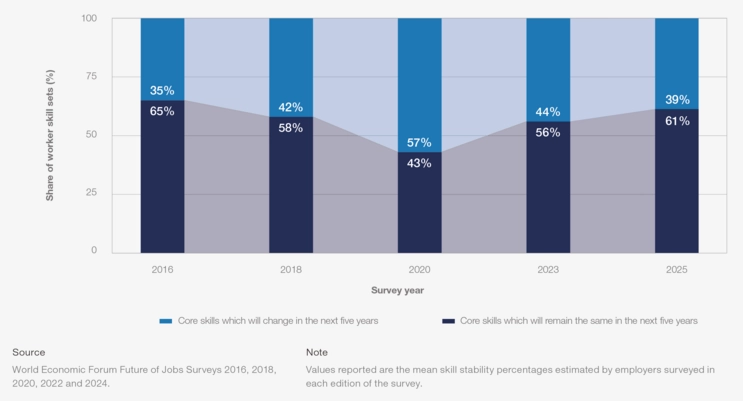
Source: World Economic Forum
Despite this effort, 70% of corporate leaders still report “critical” skills gaps today. IDC predicts 90% of organizations will suffer business losses from digital skills shortages by 2025. This will amount to USD 6.5 trillion globally by year-end.
Additionally, employee well-being is emerging as a strategic lever based on the HR Lineup reports. 72% of companies offer wellness programs, with 65% of HR leaders linking them to reduced turnover. However, workplace mental health still lags in execution.
Although more than 80% of US employees say resilience and mental health training are essential, only 11% of firms make such learning mandatory. Organizations that integrate cross-skilling, internal mobility, mental health literacy, and flexible work policies are seeing measurable benefits.
Core Practices for Resilience
| Component | Purpose | Impact |
|---|---|---|
| Cross-Skilling & Skills Mobility | Equip employees to handle multiple roles and rotate across functions. | Bridges capability gaps and enhances workforce agility. |
| Continuous Learning Culture | Offer structured upskilling, mentorship, and ongoing development dialogue. | Drives engagement and increases employee retention. |
| Psychological Safety & Trauma-Informed Support | Foster supportive environments where vulnerability and recovery are normalized. | Boosts emotional resilience and collective well-being. |
| Microskills Training & Wellness Moments | Embed quick, focused skill-building and well-being practices into daily routines. | Reduces fatigue and reinforces high-performance habits. |
| Leadership Development for Resilience | Train leaders to model empathy, adaptability, and steady crisis response. | Strengthens trust, clarity, and team resilience under pressure. |
Technologies You Need to Invest In
- Skills & Competency Platforms: Empower tracking, cross-skilling workflows, and manage certifications to support agile role coverage.
- AI-powered Learning Platforms: Personalized learning recommendations, skill gap analysis, and reinforcement modules for continuous growth.
- Wellness & Resilience Programs: Trauma-informed training and peer-support networks that reduce stigma and reinforce collective care.
- Leadership-as-a-Service Platforms: Role-modeling leadership behaviors through on-demand toolkits, micro-training, and coaching.
Real-World Case Studies
Indeavor Solution – Cross-Skilling for Operational Flexibility
Using Indeavor, a manufacturing firm cross-trained 70% of its frontline staff across five core roles. This program boosted scheduling flexibility, reduced error rates, and ensured coverage during absences.
Detroit at Work – Trauma-Informed Resilience Training
Led by the Corporation for a Skilled Workforce, this initiative included training and coaching across 30 career centers. Staff reported an increase in compassion satisfaction, and resilience became embedded in daily organizational norms.
ServiceNow’s AI-Guided Cross-Skilling for Workforce Resilience
ServiceNow leverages an AI-powered learning platform to map career goals, detect skill gaps, and recommend personalized training paths. It promotes cross-functional development and offers a more adaptable, engaged workforce equipped to support evolving business demands.
Spotlighting an Innovator: Skillberg
Skillberg is a French startup that builds an AI-powered competency and talent-management solution. It structures a graph database of sub-skills and links them to roles, candidates, and learning paths via an API-driven integration.
The platform employs AI to generate dynamic skill frameworks and assess both internal teams and applicant CVs, and update people-review data. It performs smart matching between employees and career or mobility opportunities and scaffolds tailored training recommendations tied to skill gaps.
Consequently, it reduces manual human resource work in building competency catalogs and supports structured career conversations. This empowers HR teams and managers to visualize skills, make data-driven talent decision,s and align workforce planning with business strategy.
10. Harness Ecosystem Collaboration & Public-Private Partnerships
The United Nations Office for Disaster Risk Reduction (UNDRR)’s Global Assessment Report 2025 estimates annual disaster losses (including indirect and ecosystem costs) of USD 2.3 trillion.
Despite the mention of “resilience” in Fortune 500 quarterly earnings calls soaring by more than 200% from 2019 to 2024, 84% of executives still feel unprepared for the next disruption.
3000 global leaders came together in WEF 2025 to co-develop cross-sector strategies to reflect a growing consensus that resilience must be built collectively.
Governments are aligning with this agenda. The Organization for Economic Co-operation and Development (OECD)’s 2025 Supply Chain Resilience Review urges international coordination and public-private partnership to safeguard critical supply routes.
This momentum is visible in landmark deals like Brazil’s Mato Grosso do Sul Resilient Roads Project, which plans to channel USD 100 million in private investment into climate-resilient infrastructure through a 35-year CREMA-PPP model.
While Poland’s Gaz-System LNG terminal also secured USD 593 million in EU-backed financing to anchor energy resilience. From data-sharing consortia to regulated industrial alliances, such collaborations are proving their value.
Core Practices for Resilience
| Component | Purpose | Impact |
|---|---|---|
| Multi-Stakeholder Data & Risk-Sharing | Securely share infrastructure, operations, and threat intelligence data across partners. | Improves situational awareness and early disruption response. |
| Joint Resilience Infrastructure Projects | Co-develop shared transport, logistics, digital, and energy infrastructure. | Lowers costs and strengthens collective response capacity. |
| Crisis Management Commons | Coordinate emergency protocols and simulations across sectors and agencies. | Improves multi-party coordination and reduces duplication of effort. |
| Ecosystem Financing Models | Leverage resilience bonds, blended finance, and sustainability-linked instruments. | Unlocks larger, incentive-aligned funding pools. |
| Public-Private Workforce & Innovation Hubs | Partner across sectors to develop skills, co-create solutions, and run pilots. | Fosters scalable innovation and shared resilience capacity. |
Technologies You Need to Invest In & Models
- Secure Data Collaboration Platforms: Federated learning and graph-based risk models allow shared supply-chain and threat intelligence while preserving data privacy.
- Digital Public Infrastructure (DPI): Shared systems, like India’s UPI or Estonia’s X-Road, can underpin resilience services across sectors.
- PPP Frameworks & Toolkits: IADB and OECD models guide the design of disaster-resilient PPPs. This ensures clear governance, climate-risk criteria, and funding alignment.
Real-World Case Studies
Microsoft-USDA Partnership – Tech-for-Agricultural Resilience
Last year, Microsoft and the USDA launched a PPP that deploys cloud-enabled forecasting, farmer training, and climate-aware supply-chain analytics. This initiative increased small-farm harvest forecast accuracy, improved resource planning, and strengthened food security.
Port of Corpus Christi & Public Authorities
Building on its digital twin and zero trust infrastructure, the port collaborates with federal agencies, energy operators, and cybersecurity bodies through FSARC-style alliances. This ensures secure, resilient continuity in essential services for the private and public.
Philippine PPP Ecosystem – Disaster Resilience
The ADB’s 2025 PPP monitor for the Philippines highlights how coordinated PPPs across roads, flood defenses, and power systems enable shared investment, capacity-building, and disaster risk modeling.
Spotlighting an Innovator: StartUs Insights
StartUs Insights is an Austrian company that offers the Discovery Platform, an AI-powered innovation-intelligence and trend-scouting platform. It collects data on more than 7 million startups, 20 000+ technologies, and 150 million news, patent, and market reports. The platform also offers an AI innovation research assistant, FoxiAI. It automates data collection and connects all innovation data to accelerate the research process.
Its centralized and exhaustive database of the global innovation ecosystem allows innovation managers and enterprises to leverage data-driven decisions for open innovation, investment plans, and more.
Explore the Latest Business Technologies & Companies to Stay Ahead
With thousands of emerging technologies and startups, navigating the right investment and partnership opportunities that bring returns quickly is challenging.
With access to over 7 million emerging companies and 20K+ technologies & trends globally, our AI and Big Data-powered Discovery Platform equips you with the actionable insights you need to stay ahead of the curve in your market.
Leverage this powerful tool to spot the next big thing before it goes mainstream. Stay relevant, resilient, and ready for what is next.

![Business Resilience Planning: 10 Strategies & Technologies to Tackle the Current Market [2025-2026]](https://www.startus-insights.com/wp-content/uploads/2025/06/Business-Resilience-Planning-SharedImg-StartUs-Insights-noresize-420x236.webp)

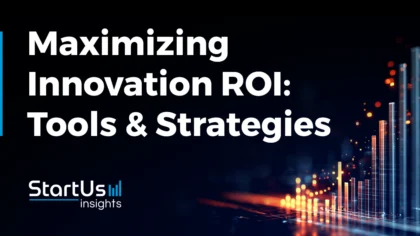
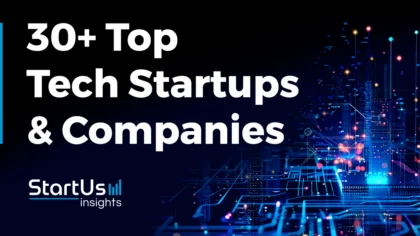
![Top 16 Future Technologies & How They Impact 40+ Industries [2026-2030]](https://www.startus-insights.com/wp-content/uploads/2024/06/Future-Technologies-SharedImg-StartUs-Insights-noresize-420x236.webp)
